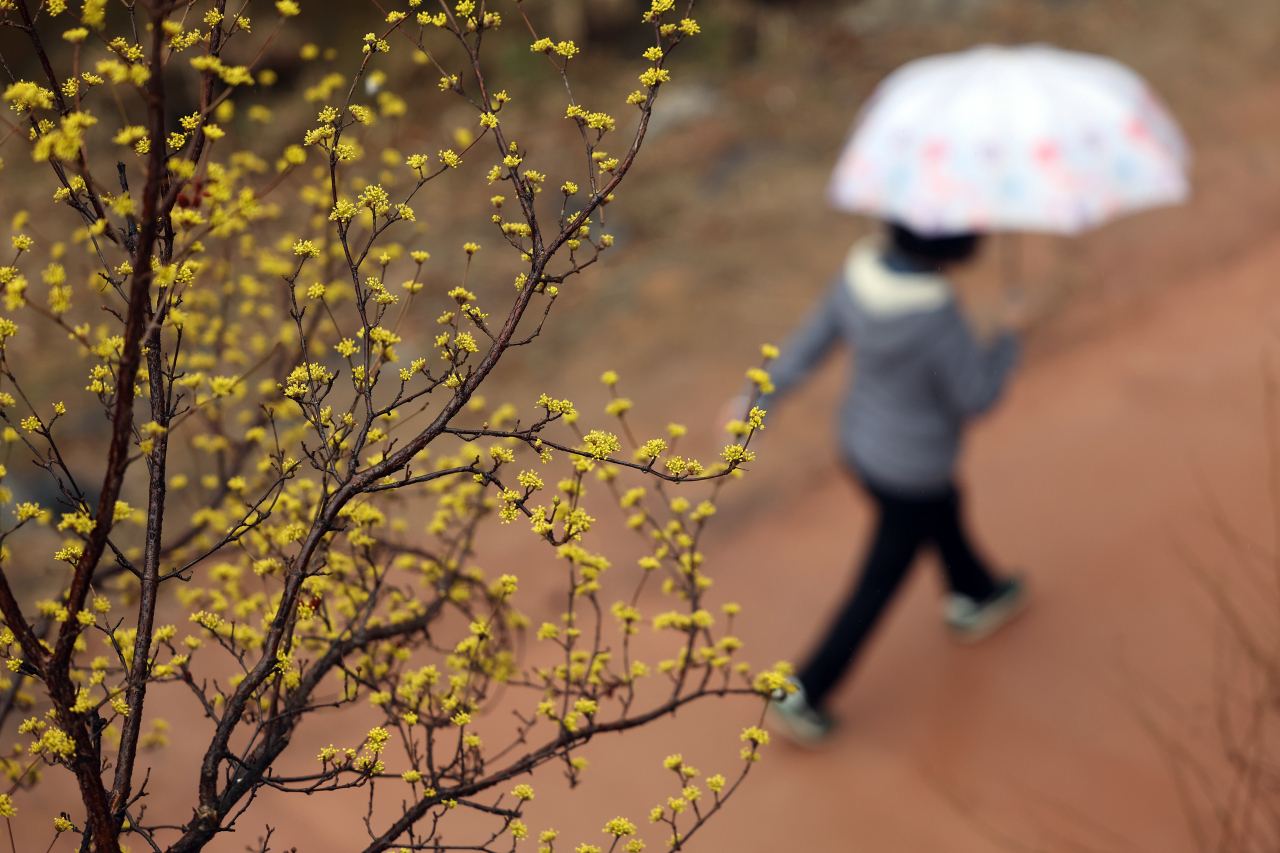Drought levels to maintain normal conditions for next 3 months
By Lee Jung-jooPublished : March 12, 2024 - 17:08

Meteorological drought levels are forecast to remain normal nationwide, due to high levels of precipitation over the past few months compared to previous years, the Ministry of Interior and Safety said Tuesday.
According to the Interior Ministry, the total precipitation levels recorded over the past six months reached up to 504.7 millimeters nationwide -- 150.6 percent above the average precipitation levels recorded between 1991 and 2020. In February alone, up to 102.6 mm of rain was recorded, marking a 287 percent increase compared to the average amount of rain for that month, which stands at 35.7 mm.
Total precipitation levels also showed regional variations. Over the past six months, Jeju Island saw 523.5 mm of rain, 94.4 percent of the average precipitation levels recorded from 1991 to 2020. In other regions such as Seoul, Gyeonggi Province, Gangwon Province and South Jeolla Province, there was more than a 100 percent increase in average precipitation levels.
Precipitation levels are also expected to remain the same or above normal over the next three months, with a 40 percent chance of levels being near to above normal in March and April and a 50 percent chance of levels being near to above normal in May.
Tuesday’s data presented by the Interior Ministry contrasts from the past two years when drought levels were recorded to be at their worst. As low precipitation was recorded during the winter of 2021, South Korea saw a total of 157 drought days in 2022, ranking as the second-highest number of drought days since records began in 1974. Areas like South Jeolla Province and South Gyeongsang Province were hit especially hard, recording up to 227.3 drought days.
The impacts of the nationwide drought from 2022 lasted until the summer of 2023 after Korea saw heavy rain between June to July. In September, the Interior Ministry reported that Korea’s meteorological drought levels will remain in normal conditions for the first time since 2022.
While meteorological drought levels are forecast to remain in normal conditions, the Interior Ministry will continue to provide emergency water supply using water trucks to some island regions like Ongjin-gun in Incheon, Jindo-gun in South Jeolla Province and Tongyeong in South Gyeongsang Province to prevent reservoirs and dams from reaching low levels as it did in 2022.
Meanwhile, the average storage rate of agricultural reservoirs nationwide has reached up to 90.8 percent as of March 4, marking it 121.1 percent higher than previous years. All dams have maintained normal water levels, with 20 multipurpose dams and 14 water dams recording water levels exceeding the usual amounts at 168.3 percent and 162.9 percent, respectively.









![[Weekender] How DDP emerged as an icon of Seoul](http://res.heraldm.com/phpwas/restmb_idxmake.php?idx=644&simg=/content/image/2024/04/25/20240425050915_0.jpg&u=)

![[Herald Interview] Guggenheim Museum makes a push for technology-based art with LG](http://res.heraldm.com/phpwas/restmb_idxmake.php?idx=644&simg=/content/image/2024/04/26/20240426050608_0.jpg&u=20240428114717)






![[Herald Interview] Mistakes turn into blessings in street performance, director says](http://res.heraldm.com/phpwas/restmb_idxmake.php?idx=652&simg=/content/image/2024/04/28/20240428050150_0.jpg&u=)
